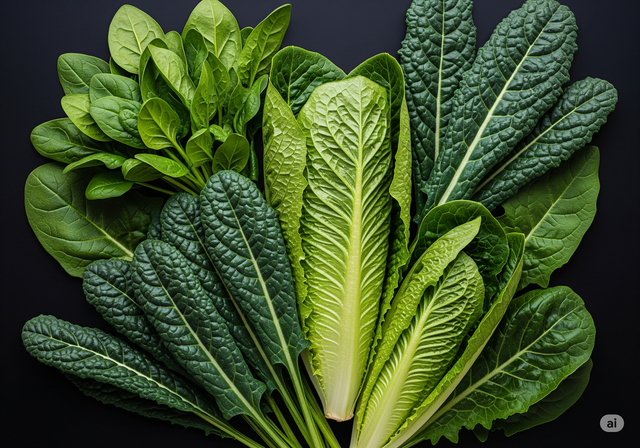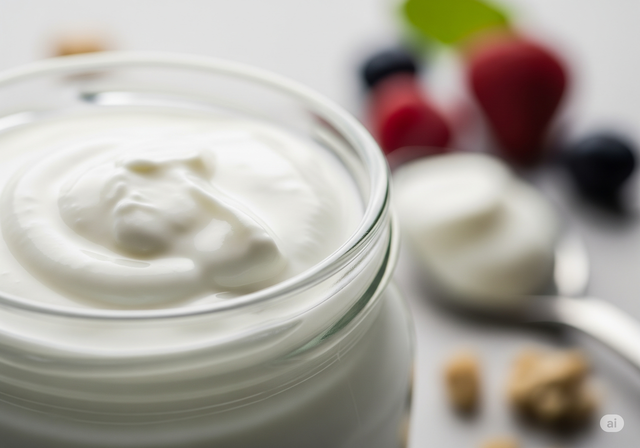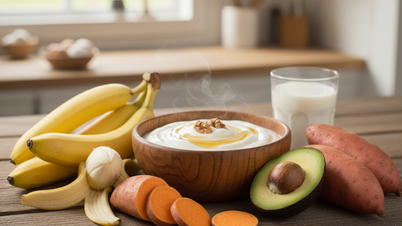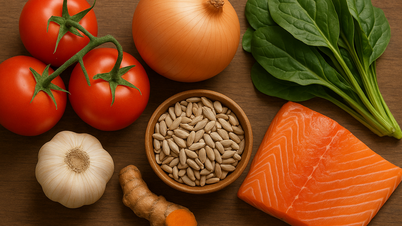Dr. Cheng-Han Chen, a cardiologist in California (USA), said that people should focus on fruits, vegetables, nuts, whole grains and lean protein. Accordingly, some of the foods below have the strongest effects, according to the Prevention (USA) news site.
Green leafy vegetables
“Green leafy vegetables like spinach, kale, arugula, etc. help reduce the risk of stroke due to their high nitrate content. The body converts nitrate into nitric oxide, which helps dilate blood vessels, improve blood circulation, and lower blood pressure. They are also rich in vitamins, minerals, and fiber, which are linked to a reduced risk of stroke,” explains Sonya Angelone, a nutritionist in California.

Green leafy vegetables help reduce the risk of stroke thanks to their high nitrate content.
Photo: AI
A study published in the European Journal of Epidemiology in 2021 found that people who consumed at least 60 mg of nitrate from vegetables per day (equivalent to about a bowl of green leafy vegetables) had a 17% lower risk of stroke.
Oranges and other citrus fruits
Oranges, grapefruits, and other citrus fruits are high in vitamin C, folate, and potassium, which have antioxidant and anti-inflammatory properties. They also provide soluble fiber, which helps lower cholesterol.
“However, it is important to note that grapefruit can interact with certain medications. People should consult their doctor if they are taking medication to ensure there are no adverse interactions with this fruit,” Angelone warned.
Walnuts
A study published in the journal Circulation in 2021 found that eating about half a cup of walnuts a day for two years reduced levels of “bad” cholesterol — a factor that increases the risk of stroke.
The most notable feature of walnuts is their omega-3 fatty acid content. “This substance can support heart health and reduce inflammation in the body,” according to nutritionist Keri Gans (USA).
“Walnuts are a good source of alpha-linolenic acid (ALA), which helps fight inflammation, improve circulation, and lower blood pressure. They also contain antioxidants and other beneficial micronutrients that help protect the cardiovascular system,” Angelone adds.
Yogurt
Yogurt provides calcium, potassium and probiotics, which help lower blood pressure and improve blood lipids, so it should be used instead of other unhealthy snacks.
Yogurt is also part of the DASH diet, a popular diet for preventing strokes. However, low-sugar yogurts should be preferred, because added sugars can increase the risk of cardiovascular disease, according to Dr. Chen.

Yogurt provides calcium, potassium and probiotics, which help lower blood pressure and improve blood lipids.
Photo: AI
Oatmeal
Whole grains like oats are rich in magnesium, B vitamins and antioxidants, which help protect blood vessel health. Additionally, oats provide fiber that helps stabilize blood sugar.
Whole grains may also help reduce inflammation in the body — a contributing factor to stroke.
Fatty fish
Fatty fish such as salmon, sardines and mackerel are rich in EPA and DHA, which help reduce inflammation, stabilize heart rhythm, improve blood lipids and reduce the risk of blood clots by reducing platelet stickiness.
Fatty fish also has the ability to lower blood pressure and cholesterol, and is an ideal source of lean protein, supporting weight control, thereby contributing to preventing the risk of stroke, added Angelone.
Vegetable protein
A study published in the scientific journal The American Journal of Clinical Nutrition (USA) in 2024 showed that people who consume mainly vegetable protein have a 19% lower risk of cardiovascular disease and a 27% lower risk of coronary artery disease than those who eat a lot of animal protein.
Other foods
In addition to the main food groups listed, nutritionists and Dr. Chen also suggest some additional foods that should be included in the diet:
Coffee: The trace minerals and polyphenols in coffee have antioxidant properties that help regulate cholesterol, reduce inflammation and oxidative stress. Moderate coffee consumption may help reduce the risk of stroke.
Beetroot: Beets are rich in nitrates, which help the body produce nitric oxide, which is beneficial for blood vessels.
Avocado: Avocados provide potassium and heart-healthy monounsaturated fats.
Green tea: Rich in catechins, which help reduce oxidative stress.
Beans: A source of both fiber and vegetable protein.
Dark chocolate: Flavonoids in dark chocolate help improve nitric oxide absorption and may help lower blood pressure slightly. However, it should be consumed in moderation.
Source: https://thanhnien.vn/chuyen-gia-tiet-lo-cac-thuc-pham-giup-giam-nguy-co-dot-quy-185250725213300155.htm


![[Photo] Ho Chi Minh City Youth Take Action for a Cleaner Environment](https://vphoto.vietnam.vn/thumb/1200x675/vietnam/resource/IMAGE/2025/11/04/1762233574890_550816358-1108586934787014-6430522970717297480-n-1-jpg.webp)

![[Photo] Panorama of the Patriotic Emulation Congress of Nhan Dan Newspaper for the period 2025-2030](https://vphoto.vietnam.vn/thumb/1200x675/vietnam/resource/IMAGE/2025/11/04/1762252775462_ndo_br_dhthiduayeuncbaond-6125-jpg.webp)

![[Photo] The road connecting Dong Nai with Ho Chi Minh City is still unfinished after 5 years of construction.](https://vphoto.vietnam.vn/thumb/1200x675/vietnam/resource/IMAGE/2025/11/04/1762241675985_ndo_br_dji-20251104104418-0635-d-resize-1295-jpg.webp)
![[Photo] Ca Mau "struggling" to cope with the highest tide of the year, forecast to exceed alert level 3](https://vphoto.vietnam.vn/thumb/1200x675/vietnam/resource/IMAGE/2025/11/04/1762235371445_ndo_br_trieu-cuong-2-6486-jpg.webp)

































































































Comment (0)